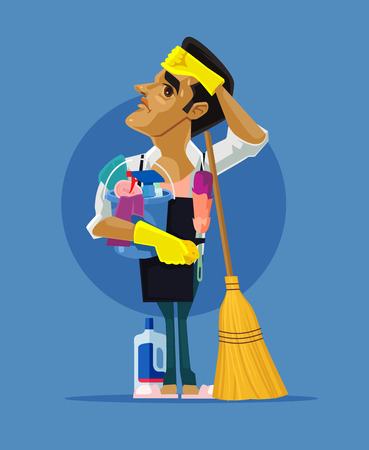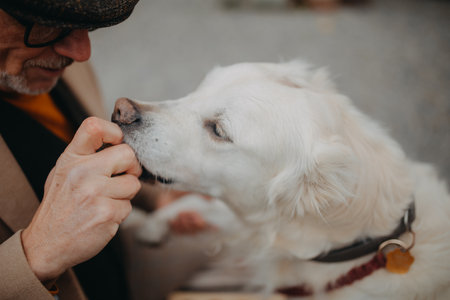Understanding Your Dog’s Ears
Your dog’s ears are much more than just adorable features—they are intricate structures that play a vital role in their health and well-being. Canine ears come in various shapes and sizes, from floppy and long to short and perky, depending on the breed. The anatomy of a dog’s ear includes the outer ear (pinna), ear canal, and inner ear, each with its own function. Unlike human ears, a dog’s ear canal is L-shaped, which makes it harder for debris or moisture to escape naturally. This unique structure means that dirt, wax, and bacteria can easily become trapped, making regular ear care essential.
Dogs with floppy ears—like Cocker Spaniels or Golden Retrievers—are more prone to ear infections because their ear flaps limit airflow, creating a warm, moist environment where bacteria thrive. On the other hand, breeds with upright ears may have better air circulation but are still at risk for irritants like dust or pollen entering the canal. No matter your pup’s breed or ear shape, routine checks and gentle cleaning can help prevent discomfort, reduce the risk of infections, and keep your dog happy and healthy year-round.
2. Recognizing Signs of Ear Problems
Your dog’s ears can tell you a lot about their overall health. Early detection of ear issues is key to preventing infections and keeping your pup comfortable. It’s important to know the common signs that something might be wrong, so you can take action before a small problem turns into a bigger one.
Key Symptoms to Watch For
| Symptom | What You Might Notice |
|---|---|
| Odor | A strong or unpleasant smell coming from your dog’s ears |
| Redness | The inner ear looks more red than usual, possibly inflamed |
| Discharge | Yellow, brown, or bloody fluid in or around the ear canal |
| Excessive Scratching | Your dog constantly scratching at their ears or shaking their head |
| Pain or Sensitivity | Pulling away, whining, or reacting when their ears are touched |
| Swelling or Warmth | The ear flap feels swollen or hotter than usual to the touch |
When to Call Your Veterinarian
If you notice any of these symptoms lasting more than a day or two, it’s time to consult your veterinarian. Persistent signs—especially discharge, odor, swelling, or pain—can indicate an infection that needs professional treatment. Don’t attempt to clean severely inflamed or painful ears at home, as this could cause more harm. Early intervention keeps your dog’s ears healthy and helps prevent chronic problems down the road.

3. Step-by-Step Guide to Cleaning Your Dogs Ears at Home
Keeping your dog’s ears clean is an important part of their overall health and can help prevent painful infections. Here’s a safe, practical guide to cleaning your dog’s ears at home using vet-recommended methods.
Recommended Supplies
- Dog-specific ear cleaner: Always use a cleaner designed for dogs—never alcohol or hydrogen peroxide, as these can irritate sensitive ear tissue.
- Cotton balls or gauze: Soft and gentle materials work best for wiping away debris.
- Treats: Keep a few handy to reward your pup for cooperation and make the experience positive.
Step-by-Step Cleaning Process
- Check your dog’s mood: Choose a time when your dog is calm and relaxed. Enlist help if you have a wiggly pup.
- Inspect the ears: Look for redness, discharge, or foul odor. If you notice any of these signs, contact your veterinarian before cleaning.
- Apply ear cleaner: Gently lift your dog’s ear flap and squeeze in the recommended amount of ear cleaning solution. Avoid letting the tip of the bottle touch the ear to prevent contamination.
- Massage the base: Gently massage the base of the ear for 20–30 seconds. This helps loosen wax and debris inside the canal. You should hear a squishing sound as the solution moves around.
- Let your dog shake: Allow your dog to shake their head—this helps bring debris up from deeper in the canal.
- Wipe away debris: Use a cotton ball or gauze pad to gently wipe out any visible dirt or wax from the inner flap and entrance of the canal. Never insert anything deep into the ear, such as Q-tips, as this can cause injury.
What to Avoid
- No cotton swabs (Q-tips): These can push debris further down and risk damaging the eardrum.
- Avoid over-cleaning: Most dogs only need ear cleaning once a month unless your vet recommends more frequent care.
- No human products: Stick to cleaners made specifically for pets; home remedies like vinegar or hydrogen peroxide can do more harm than good.
When in Doubt, Ask Your Vet
If you’re ever unsure about how to clean your dog’s ears safely—or if something doesn’t look right—don’t hesitate to reach out to your veterinarian for guidance. Safe and regular at-home ear care goes a long way toward keeping your furry friend healthy and comfortable!
4. Preventing Ear Infections
Keeping your dog’s ears healthy goes beyond just cleaning—it’s about building a holistic routine that considers their daily activities, environment, and even what they eat. Here’s how you can help prevent ear infections and support your dog’s overall well-being.
Best Practices for Routine Ear Care
- Regular Inspections: Check your dog’s ears weekly for redness, swelling, or unusual odor.
- Gentle Cleaning: Use a vet-recommended ear cleaner and cotton balls. Avoid using Q-tips as they can push debris deeper or damage the ear canal.
- Trim Ear Hair: For breeds with hairy ear canals, regular trimming helps improve air flow and reduces the risk of infection.
Drying Your Dog’s Ears After Swimming or Bathing
Moisture trapped in the ears is a leading cause of infections, especially for active dogs who love swimming or get frequent baths. Here are practical steps to keep ears dry and healthy:
| Situation | How to Dry Ears | Tips |
|---|---|---|
| After Swimming | Gently wipe the outer ear flap and entrance to the canal with a clean, dry towel. | Avoid inserting anything deep into the ear. |
| After Bathing | Use a soft cloth to absorb moisture, especially in floppy-eared breeds. | You may use a pet-safe ear drying solution if recommended by your vet. |
The Role of Diet and Environment in Ear Health
- Diet: A balanced diet supports immune health and reduces inflammation. Dogs with food allergies may be more prone to chronic ear issues—consult your vet about hypoallergenic options if needed.
- Environment: Regularly clean bedding and living spaces to minimize allergens like dust mites or pollen. If your dog spends time outdoors, check ears after hikes or playtime for grass seeds or debris that could cause irritation.
Quick Reference: Tips for Preventing Ear Infections
- Keep ears dry after any water exposure.
- Avoid over-cleaning—too much can disrupt natural defenses.
- Watch for signs of discomfort such as head shaking or scratching, and consult your veterinarian if symptoms persist.
By following these best practices tailored to your dog’s lifestyle and needs, you’ll help protect their ears from infections and keep them happy and comfortable all year round.
5. When to Get Professional Help
Even with your best efforts at home, there are times when professional veterinary care is absolutely essential for your dog’s ear health. Recognizing these situations early can make a big difference in preventing more serious problems down the road.
Signs Your Dog Needs a Vet Visit
If you notice symptoms like persistent scratching, head shaking, redness, swelling, foul odor, discharge, or visible discomfort around your dog’s ears, it’s time to reach out to your veterinarian. Other warning signs include sudden changes in behavior—like increased irritability or reluctance to be touched near the ears—or if your dog seems off-balance. These could indicate an infection, injury, or even something more serious such as ear mites or polyps.
Don’t Attempt DIY Fixes for Serious Issues
While routine cleaning at home is safe, avoid using over-the-counter medications or tools not recommended by your vet. Inappropriate treatments can worsen infections or cause injury. Only a licensed veterinarian can properly diagnose and treat ear conditions, ensuring your pet receives the right medication and care.
The Importance of Regular Check-Ups
Routine veterinary check-ups are crucial for maintaining long-term ear health. During these visits, your vet can catch early signs of infection or other issues that may not be obvious at home. They’ll also guide you on proper cleaning techniques and frequency tailored to your dog’s unique needs. By scheduling regular wellness exams, you’re taking a proactive step in keeping your furry friend’s ears healthy and comfortable for years to come.
6. Frequently Asked Questions
How often should I clean my dog’s ears?
For most dogs, cleaning their ears once a month is sufficient. However, breeds with floppy ears or those prone to ear infections may need more frequent cleaning—sometimes as often as once a week. Always consult your veterinarian for guidance tailored to your dog’s specific needs.
Can I use Q-tips or cotton swabs to clean my dog’s ears?
It’s best to avoid using Q-tips or cotton swabs inside your dog’s ear canal. While it might be tempting, these can push debris further in and potentially injure the ear. Instead, use a soft cotton ball or gauze pad on the outer part of the ear after applying a vet-recommended ear cleaner.
What are signs that my dog may have an ear infection?
Common symptoms include head shaking, scratching at the ears, redness, swelling, odor, or unusual discharge. If you notice any of these signs, contact your veterinarian promptly for an evaluation and treatment plan.
Are there any myths about dog ear cleaning I should be aware of?
Yes—one common myth is that all dogs need frequent ear cleaning. In reality, over-cleaning can actually irritate the ears and cause problems. Another myth is that human ear cleaning solutions are safe for dogs; always use products specifically formulated for pets.
Which ear cleaning products are safe and effective?
Look for gentle, non-alcohol-based cleaners recommended by veterinarians and made specifically for dogs. Some popular brands in the U.S. include Zymox, Virbac Epi-Otic, and Vet’s Best. Avoid homemade remedies like vinegar or hydrogen peroxide unless directed by your vet.
If I’m unsure about how to clean my dog’s ears, what should I do?
If you’re ever uncertain or nervous about cleaning your dog’s ears at home, ask your veterinarian for a demonstration during your next visit. They can show you the proper technique and recommend the right products for your pet’s unique needs.


